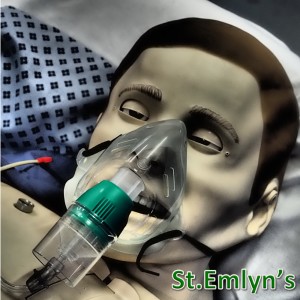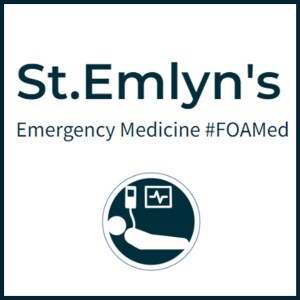
- Podcast Features
-
Monetization
-
Ads Marketplace
Join Ads Marketplace to earn through podcast sponsorships.
-
PodAds
Manage your ads with dynamic ad insertion capability.
-
Apple Podcasts Subscriptions Integration
Monetize with Apple Podcasts Subscriptions via Podbean.
-
Live Streaming
Earn rewards and recurring income from Fan Club membership.
-
Ads Marketplace
- Podbean App
-
Help and Support
-
Help Center
Get the answers and support you need.
-
Podbean Academy
Resources and guides to launch, grow, and monetize podcast.
-
Podbean Blog
Stay updated with the latest podcasting tips and trends.
-
What’s New
Check out our newest and recently released features!
-
Podcasting Smarter
Podcast interviews, best practices, and helpful tips.
-
Help Center
-
Popular Topics
-
How to Start a Podcast
The step-by-step guide to start your own podcast.
-
How to Start a Live Podcast
Create the best live podcast and engage your audience.
-
How to Monetize a Podcast
Tips on making the decision to monetize your podcast.
-
How to Promote Your Podcast
The best ways to get more eyes and ears on your podcast.
-
Podcast Advertising 101
Everything you need to know about podcast advertising.
-
Mobile Podcast Recording Guide
The ultimate guide to recording a podcast on your phone.
-
How to Use Group Recording
Steps to set up and use group recording in the Podbean app.
-
How to Start a Podcast
-
Podcasting
- Podcast Features
-
Monetization
-
Ads Marketplace
Join Ads Marketplace to earn through podcast sponsorships.
-
PodAds
Manage your ads with dynamic ad insertion capability.
-
Apple Podcasts Subscriptions Integration
Monetize with Apple Podcasts Subscriptions via Podbean.
-
Live Streaming
Earn rewards and recurring income from Fan Club membership.
-
Ads Marketplace
- Podbean App
- Advertisers
- Enterprise
- Pricing
-
Resources
-
Help and Support
-
Help Center
Get the answers and support you need.
-
Podbean Academy
Resources and guides to launch, grow, and monetize podcast.
-
Podbean Blog
Stay updated with the latest podcasting tips and trends.
-
What’s New
Check out our newest and recently released features!
-
Podcasting Smarter
Podcast interviews, best practices, and helpful tips.
-
Help Center
-
Popular Topics
-
How to Start a Podcast
The step-by-step guide to start your own podcast.
-
How to Start a Live Podcast
Create the best live podcast and engage your audience.
-
How to Monetize a Podcast
Tips on making the decision to monetize your podcast.
-
How to Promote Your Podcast
The best ways to get more eyes and ears on your podcast.
-
Podcast Advertising 101
Everything you need to know about podcast advertising.
-
Mobile Podcast Recording Guide
The ultimate guide to recording a podcast on your phone.
-
How to Use Group Recording
Steps to set up and use group recording in the Podbean app.
-
How to Start a Podcast
-
Help and Support
- Discover

Hello and welcome to the St Emlyn's blog. I'm Simon Carley, and alongside me is Natalie May. This post addresses a frequent and potentially serious issue in emergency departments: the ingestion of button batteries. With Halloween and Christmas approaching, these small but hazardous objects become more prevalent in households with small children. Here, we provide critical insights for emergency physicians on identifying, managing, and preventing complications related to button battery ingestion.
Understanding Button Battery IngestionButton batteries, or disc batteries, are small, round batteries found in devices like watches, musical badges, and holiday decorations. Their size and shiny appearance make them attractive to children, who may ingest them or insert them into their noses or ears. While they appear harmless, button batteries can cause significant harm if they become lodged in mucosal surfaces.
The Risks of Button Battery IngestionWhen a button battery becomes wedged against a mucosal surface, it generates a small electrical current. This current can cause chemical burns and tissue damage within as little as two hours. If not promptly removed, the battery can lead to severe complications, including death.
Common Scenarios and SymptomsChildren often ingest various objects, but button batteries pose a unique risk due to their electrical properties. Here are common scenarios and symptoms to watch for:
- Ingestion: Symptoms range from mild (drooling, difficulty swallowing) to severe (vomiting, abdominal pain, gastrointestinal bleeding).
- Nasal Insertion: Batteries in the nose can cause nasal discharge, pain, and significant tissue damage if unnoticed.
- Ear Insertion: Batteries in the ear can lead to pain, discharge, and hearing loss if not promptly addressed.
Button batteries are radiopaque, making them visible on X-rays. They can be distinguished from coins by their characteristic double shoulder appearance. This feature is crucial for accurate diagnosis and timely intervention.
Management Strategies Immediate Steps for Suspected Ingestion- High Index of Suspicion: Be vigilant for signs of button battery ingestion, especially if parents report missing batteries from devices.
- Radiological Examination: Perform an X-ray to locate the battery and determine its position.
- ENT Referral: Button batteries in the nose or ears should be removed promptly by an ear, nose, and throat specialist. These areas are less moist than the esophagus but can still suffer chemical burns and tissue damage.
- Surgical Emergency: Batteries lodged in the esophagus must be removed immediately. This task is typically handled by general surgeons or gastroenterologists. Delaying removal can lead to severe complications, including perforation, erosion into blood vessels, and catastrophic bleeding.
Even after successful removal, children must be monitored for complications. Discharge instructions should include warning signs such as gastrointestinal bleeding, severe abdominal pain, vomiting, respiratory distress, and refusal to eat. Follow-up appointments and possibly additional X-rays are essential to ensure no further damage has occurred.
Prevention Tips for ParentsEducating parents about the dangers of button batteries is crucial. Here are some tips to share with them:
- Secure Storage: Keep button batteries out of reach of children.
- Device Safety: Ensure battery compartments in devices are secure and childproof.
- Immediate Action: If a battery is missing and a child shows symptoms of ingestion, seek medical attention immediately.
A child was brought to the emergency department with a suspected nasal insertion of a button battery. Despite a thorough examination, no battery was visible. However, an X-ray revealed a large button battery lodged in the posterior nose. Prompt referral to ENT and removal prevented further complications.
Case 2: Esophageal LodgmentA child swallowed a button battery that became lodged in the esophagus. The battery was removed within two hours, but the child was monitored closely for weeks due to the risk of delayed complications. Despite initial removal, the child developed severe symptoms days later, highlighting the importance of vigilant post-removal care.
ConclusionButton batteries pose a significant risk to children, particularly during festive seasons when they are more prevalent in households. Emergency physicians must maintain a high index of suspicion, utilize radiological tools effectively, and act swiftly to manage cases of ingestion or insertion. Educating parents about the dangers and prevention strategies is equally important. Stay vigilant, stay informed, and ensure the safety of our youngest patients.
Additional ResourcesFor more information on button battery ingestion and other pediatric emergencies, visit the St Emlyn's blog. Follow us on Facebook and join our community of emergency medicine professionals dedicated to providing the best care for our patients.
More Episodes
Create your
podcast in
minutes
- Full-featured podcast site
- Unlimited storage and bandwidth
- Comprehensive podcast stats
- Distribute to Apple Podcasts, Spotify, and more
- Make money with your podcast
It is Free
- Privacy Policy
- Cookie Policy
- Terms of Use
- Consent Preferences
- Copyright © 2015-2025 Podbean.com




